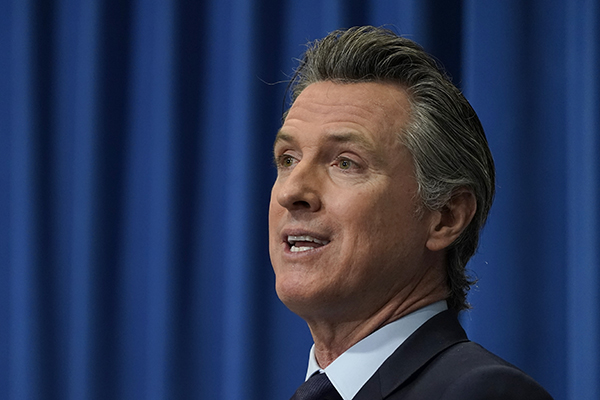States’ Education Budget Proposals for Next Year Not as Bleak as Many Predicted

Governors in several states are proposing increases in funding for education next year, buoyed by confidence that state revenues will improve from the deep recession caused by the pandemic.
As of this week, governors in 28 states had released budget blueprints for fiscal year 2022, which in states typically begins in July. It is up to state legislatures to approve budgets before they can become law.
Some states enact funding on a per-year basis, while others approve spending for two-year periods.
The funding picture for next fiscal may not be as dire as some had predicted, with several states proposing education funding increases, despite worries about falling tax revenues after deep economic shocks of the COVID-19 pandemic started being felt sharply in March.
“The additional federal aid to states that’s included in that last coronavirus relief bill will be helpful,” said Brian Sigritz, the director of state fiscal studies for the National Association of State Budget Officers, told EdWeek Market Brief. That legislation, signed into law last month by former President Donald Trump, provided $54 billion in dedicated aid to K-12 schools.
The money will ease the burden on states “as they start to consider governors’ budget requests for overall and for K-12, specifically,” Sigritz said.
Here are a few highlights of how governors’ spending proposals address education.
California: In the country’s largest K-12 public school system, Gov. Gavin Newsom is proposing a one-time $2 billion allocation to “augment” resources for schools to offer in-person instruction safely, according to the proposal.
The money may be used for purchasing personal protective equipment, expanding COVID-19 testing, improving ventilation and safety of indoor and outdoor learning spaces, teacher salaries, and social and mental health services, according to the budget.
In total, the government is proposing $85.8 billion for K-12 schools and community colleges over two years, a $14.9 billion increase and the highest level of funding for schools and community colleges ever in the state.
Newsom’s proposal predicts that increased revenues will come to the state as a result of a less severe economic downturn than anticipated, relatively low income losses among high-wage segments of the population, and a stronger stock market than expected.
Arizona: Gov. Doug Ducey’s budget says the state’s education funding formula will decrease by $389 million, but proposes fully compensating for that using coronavirus relief money.
The state is projecting the decrease largely because of lower-than-expected attendance in the beginning of the school year. The governor’s office is proposing to allocate what will amount to a total of $1.9 billion in stimulus grants toward K-12 public and charter schools
Ducey proposes increasing spending on expanded early literacy, intervention programs, professional development, social-emotional learning, expanding the pipeline of teachers in low-income schools, statewide assessments.
The Republican is also calling for $40 million in additional money to expand broadband in rural communities and help bridge the digital divide.
Maryland: Gov. Larry Hogan is proposing $7.5 billion for K-12 schools, about $213 million more than required by state funding formulas.
The state’s funding formula was set to reduce aid for fiscal year 2022 because of declining enrollment. But the governor’s office is holding local jurisdictions harmless for the decline. Specifically, Hogan is proposing $151.6 million for targeted tutoring grants in every local jurisdiction, $65.5 million for special education grants, $54.7 million for the expansion of early childhood initiatives, $53.7 million for pre-K supplemental grants, and $4.5 million for out-of-school programs.
South Carolina: Gov. Henry McMaster is proposing $35.2 million to maintain state aid to K-12 classrooms at the current level, and another $100 million in supplemental funding for instructional materials, as the state looks to replace all Common Core textbooks.
Notably, McMaster is calling the state’s general assembly to fund charter schools through a dedicated, recurring funding source. Such schools are currently funded through annual supplemental appropriations. McMaster has been a strong proponent of charter schools. Other proposed major investment areas include teacher training, placing nurses in schools, computer science and coding instruction, and school mental health counselors.
New York: In one of the nation’s largest K-12 markets, Gov. Andrew Cuomo is proposing an $848.8 million increase in formula-based school aid over its fiscal year 2021 funding amount of $25.9 billion.
But the state is proposing a $393 million reduction in a $3.7 billion aid package that includes funding for state boards of cooperative educational services, which procure educational materials for school districts. For at least next fiscal year, that reduction would be fully offset by federal coronavirus relief funds. The budget highlights afterschool programs, early college high schools, and smart schools innovation as major proposed investments.
State revenue forecasts have somewhat improved since last spring, when many states projected very significant declines at the outset of the pandemic, Sigritz said.
Though improved budget conditions will help states avert severe spending reductions, policymakers may be forced to defer certain costs, such as increasing teacher pay and planning increases in state funding formulas, he said.
“In most instances, states are still projecting less revenue than what they were before the outbreak of COVID-19,” he said. “It’s just that for many states, the revenue declines aren’t as sharp as what they were originally anticipating.”
If state budgets rebound significantly, it would represent a major turnaround from much of last year. Data released last fall by NASBO showed for the first time in roughly a decade — since the last recession — the majority of states closed their fiscal year 2020 books with a decline in general revenue funds.
Forty-six states begin their fiscal year on July 1, with Alabama and Michigan starting theirs on Oct. 1, Texas starting its fiscal year on Sept. 1, and New York starting its fiscal year on April 1.
Photo: California Gov. Gavin Newsom outlines his 2021-2022 state budget proposal this month during a news conference in Sacramento, Calif. (AP Photo/Rich Pedroncelli, Pool, File)
See also:
